The year was 1994. In response to the controversy of games like Mortal Kombat and Night Trap, which led to ridiculous and unnecessary Senate hearings, the Entertainment Software Rating Board (ESRB) was formed, largely to avoid government intervention/federally-managed video game ratings.
Over the course of 24 years, the ESRB has rated thousands of games…and much like pretty much every rating system we’ve covered here, not all of their decisions have been spot-on or consistent. (I still have more respect for the ESRB than PEGI.) Here are ten decisions they’ve made over the years that stand out as being off the mark.
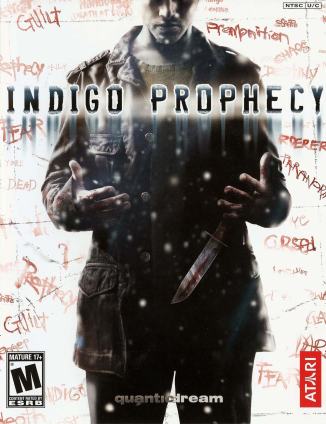
Fahrenheit: Indigo Prophecy (original “director’s cut” rating)
ESRB rating: AO for Blood, Nudity, Strong Language, Strong Sexual Content, Use of Drugs and Alcohol, Violence
The interactive drama game Fahrenheit: Indigo Prophecy had some trouble with its movie-like atmosphere, which included cutscenes with brief full-frontal nudity and sex scenes (including one interactive sex scene, where you pushed the analogue stick on the controller forward to keep your partner pleasured), earning the “director’s cut” version of the game an AO rating—as such, it could only be released on PC.
However, these sex scenes and nudity were highly overblown by the ESRB and were no more graphic than a lot of mainstream R-rated films. In fact, they were tame enough that the game was given a 15 rating completely uncensored by the BBFC for “moderate horror and sex” and a 16+ rating by PEGI.
Considering the AO-rated version of the game had material that can be found in M-rated games, the censored version though was certainly much more censored than a lot of M-rated games—for example, even a nonsexual shot of the main female’s bare breasts in the shower had the nipples digitally erased.
A remastered release of the game in 2011 was based on the “director’s cut”, yet managed to receive an M rating completely uncensored for “Violence, Blood, Sexual Content, Nudity, Language” (not even “Strong Sexual Content”), which is the ESRB sort-of admitting they were wrong the first time.
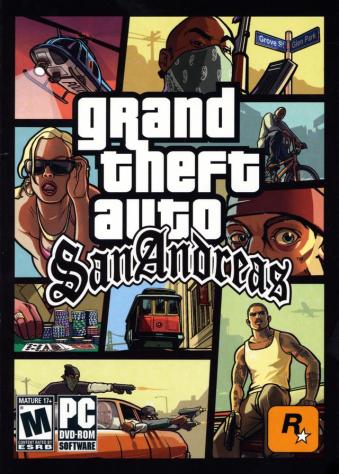
Grand Theft Auto: San Andreas (re-rating)
ESRB rating: AO for Blood and Gore, Intense Violence, Nudity, Strong Language, Strong Sexual Content, Use of Drugs
An ESRB rating that made national news. Most video game fans are familiar, even if just in passing, with the “Hot Coffee incident.”
When Grand Theft Auto: San Andreas originally went to the market with an M rating, modders found and were able to unlock a previously inaccessible minigame of the main character having “crudely animated sexual intercourse” (in the words of Wikipedia) with his girlfriend. (You are required to push “up and down” in rhythm, and both of them have their clothes on their top halves. No visible nudity at all.)
This led to a ridiculous controversy of the game being rerated as AO by the ESRB and refused classification in Australia, leading Rockstar to have to re-release the game without the content and patch existing versions of the game which had the content.
Let’s put this into perspective. The ESRB rerated a game as AO based on content you couldn’t access without hacking the game—content which depicted no pornographic material, or even explicit nudity. It was basic cable sex.
Grand Theft Auto V then proceeded to get away with the same type of interactive sex about nine years later, allowing the player to purchase and interactively pleasure a prostitute in a car, with an M rating.
(“Does the fact that more content is allowed several years later simply mean their guidelines have changed?” Maybe, but the ESRB is very quiet about their guidelines and hasn’t indicated any sort of change since the E10+ rating was introduced in March of 2005.)
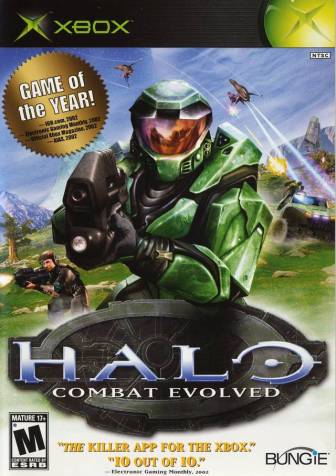
The Halo series (before Halo 5: Guardians)
ESRB rating: M for Blood and Gore, Violence
The Halo series is often cited as a “seriously, why is this rated M?” example of how the ESRB system is broken, considering Halo and Postal 2 are in the same age rating category. The Halo games contain some moderate fantasy violence and alien blood, but nothing that seemed like it couldn’t have been contained in a T rating.
In fact, early promotions for the first game suggested that it was going to be rated T, with the exact same rating descriptors. It’s rumored that the rating was bumped up after 9/11.
Halo 5: Guardians was the first game in the series to receive a T rating (and keep it) for “Blood, Mild Language, Violence”. Under the PEGI and USK systems, it received the same rating as every other Halo game.
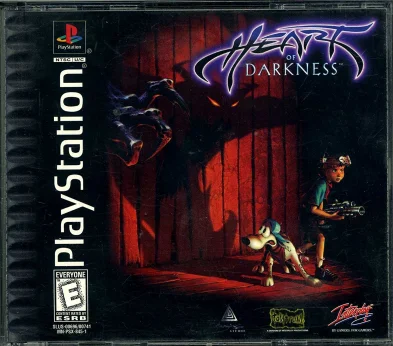
Heart of Darkness
ESRB rating: E for Animated Violence, Use of Alcohol and Tobacco
Heart of Darkness was a 1998 platformer game with an insane amount of violent deaths for an E-rated game. I’m not sure how better to explain it than linking this compilation of supposedly E-rated violence.
Internationally, original copies of the game rated by the ELSPA carried a 3+ rating—however, this was changed to a more appropriate 11+ on a rerelease.
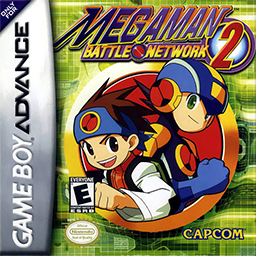
Mega Man Battle Network 2
ESRB rating: E for Comic Mischief
It appears that the ESRB handwaved this game because…come on, it’s a Mega Man game, how much objectionable content can be in there? Well, more than you might think.
Just for starters, there’s some clear mild profanity in the dialogue, including ‘damn’, ‘hell’, and ‘crap’, which the ESRB seemed to have overlooked. Furthermore, the game includes alcohol as part of its gameplay (the young child character has to acquire whiskey for a venomous spider trap). When the young child attempts to acquire the whiskey from an older gentleman, he is shooed off and told to “go suck mama’s milk.”
The two of them then proceed to have a rap battle with a substantial amount of innuendo such as “Chicky-chicky baby, make me go kaboom!”.
Furthermore, the game has a villain who frequently speaks in innuendoes relating to sadomasochism. After losing to the child protagonist, she says “I lost, but it was pure ecstasy. You dirty boy!”
The game would likely sit on the upper end of an E10+ rating today but would’ve been more appropriately rated T when it was originally rated.
(“A T rating for a Mega Man game? Preposterous!” Well, it happened to Digimon.)
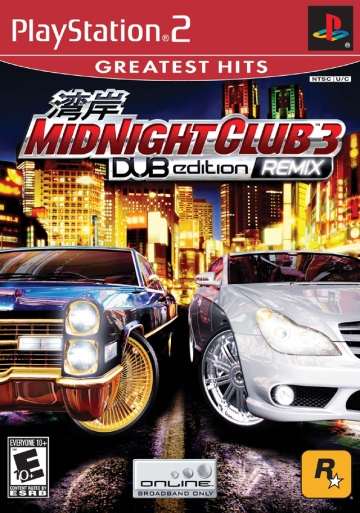
Midnight Club 3: DUB Edition
ESRB rating: E10+ for Mild Language, Mild Violence
I doubt there’s anything in the main gameplay/storyline of this game which goes above the E10+ rating. However, the ESRB appears to have completely overlooked some (or all, considering there’s no sort of warning/mention of it at all) of the music in this game, which would be enough to get the game at least a T rating and a “Strong Lyrics” content descriptor in my opinion. Take, for example, the lyrics of the version of Petey Pablo’s “Freek-a-Leek” used in-game, which has some words reversed/muted but is still very raunchy:
“Would she do it from the front?/Can she take it from the back?”
“Love to get her [reversed ‘p*ssy’] licked/by another [reversed ‘bitch’]/cuz I ain’t drunk enough to do that”
“Need a ding-dong, take her tongue and take her to ball”
“Tell me what you want/Do you want it missionary with your feet crammed to the headboard? Do you want it from the back with your face in the pillow so you can yell as loud as you want to?”
There are several other examples in the game, but this is likely the most blatant one, and surely shocked some parents who had simply bought their kid a racing game with an E10+ rating.

The Orion Conspiracy
ESRB rating: T for Strong Language
To this day, the bland graphic adventure game The Orion Conspiracy is remembered for two things: being one of the first video games to openly reference/include homosexuality in its main storyline, and being the only T-rated game to get away with at least a dozen, uncensored F-bombs (which are both voiced and seen in the text). It was also one of the first games to contain strong language, which is why it advertises it on the front like it’s a feature.
This was a very early decision for the ESRB, so perhaps no clear standards on strong language were established yet. The game has interesting classifications all over the world, with an M rating in Australia, a 6 rating from the USK in Germany, and an 18+ rating from the now-defunct ELSPA in the UK. (It’d likely receive a PEGI 16 today.)
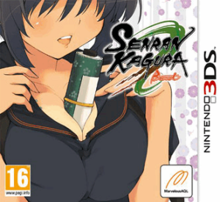
Senran Kagura Burst
ESRB rating: T for Violence, Blood, Sexual Themes, Partial Nudity, Language, Use of Alcohol
This was the first game in the semi-controversial Senran Kagura series to cross the border to Japan. The reason I say “semi-controversial” is because occasionally, someone raises a fuss about the game’s highly sexualized gameplay, including girls’ combatting by the bizarre style of “whoever gets stripped naked first loses”, as well as the popular “dressing rooms” where you can put girls in different outfits, rub/poke them as they protest, and get bonus points if you strip them down. (I’m not certain if Burst features the dressing room or not.)
The game received a 16 rating by PEGI and Germany’s USK, and a “D” (!7+) rating in its home country of Japan. Despite this, it somehow managed to pass with a T rating by the ESRB—the lowest rating of any ratings board around the world for the game. considering America’s more Puritan attitude towards sexuality, it’s probably a good thing this was a digital-only release in North America; otherwise, it would’ve caused a lot more controversy.
By comparison, just about a decade prior, Dead or Alive Xtreme Beach Volleyball, which featured some mildly provocative images/minigames of bikini-clad girls from the Dead or Alive series with no real overt sexualization/nudity (and received a PEGI 12), got an M rating for “Gambling, Mature Sexual Themes, Nudity”.
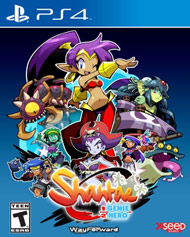
Shantae: Half-Genie Hero
ESRB rating: T for Cartoon Violence, Suggestive Themes
I have no idea why the ESRB went with a T rating for this game. Previous Shantae games have mostly been rated E10+, with one of them, Shantae and the Pirate’s Curse, carrying almost identical content descriptors (“Fantasy Violence, Suggestive Themes”) at the E10+ category.
My verdict that this is identical in content to previous Shantae games was agreed with by several international age rating boards—this game carries the same Australian rating (G), PEGI rating (12), and USK rating (6) as Shantae and the Pirate’s Curse did.
The only thing that I could find that could have led to the ESRB being harsher on this Shantae game is their allegation in the rating summary that “female creatures are depicted with exposed breasts, without discernible details (i.e., no nipples).” However, having gone through several images of all of the characters in the game, I found none with “exposed” breasts. There was some cleavage and stomach-baring in skimpy costumes, but nothing that would even expose enough for the possibility of “discernible details” to even arise. (The majority of these costumes had also been seen in the previous E10+ games.)
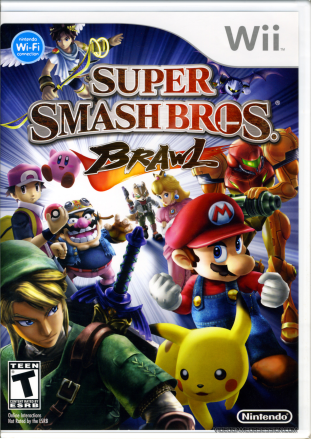
Super Smash Bros. Brawl
ESRB rating: T for Cartoon Violence, Crude Humor
This game is up there with the Halo series in ESRB decisions that have been publicly questioned.
A bit of history on Super Smash Bros.: The first game, for the Nintendo 64, was rated E for “Animated Violence”. The next game in the series, Super Smash Bros. Melee on the GameCube, was rated T for “Comic Mischief, Mild Violence”.
The T rating for Melee was mostly understandable—the violence was a bit more intense than the original Nintendo 64 game, with improved graphics. When Melee was released, the E10+ rating wasn’t yet in existence, meaning the ESRB had no choice but to go with a T rating. (This also explains the T rating for things like games based on The Incredibles, Shrek, and Tom and Jerry in the early 2000s.)
However, when Super Smash Bros. Brawl was released in 2008, the E10+ rating had been around for three years. There was no reason why the mild violence in the game couldn’t have been contained at said E10+ rating. A T rating for a game with Nintendo characters who throw each other off platforms is ridiculously strict. I went to friends’ houses where this was the only T-rated console game they owned as if their parents either made an exception or had no idea the game was even rated T. After all, why would it be?
When the newest Super Smash Bros. game was released for Wii U and Nintendo 3DS, it received a proper E10+ rating for “Cartoon Violence, Comic Mischief, Mild Suggestive Themes”, despite absolutely no change in content.
